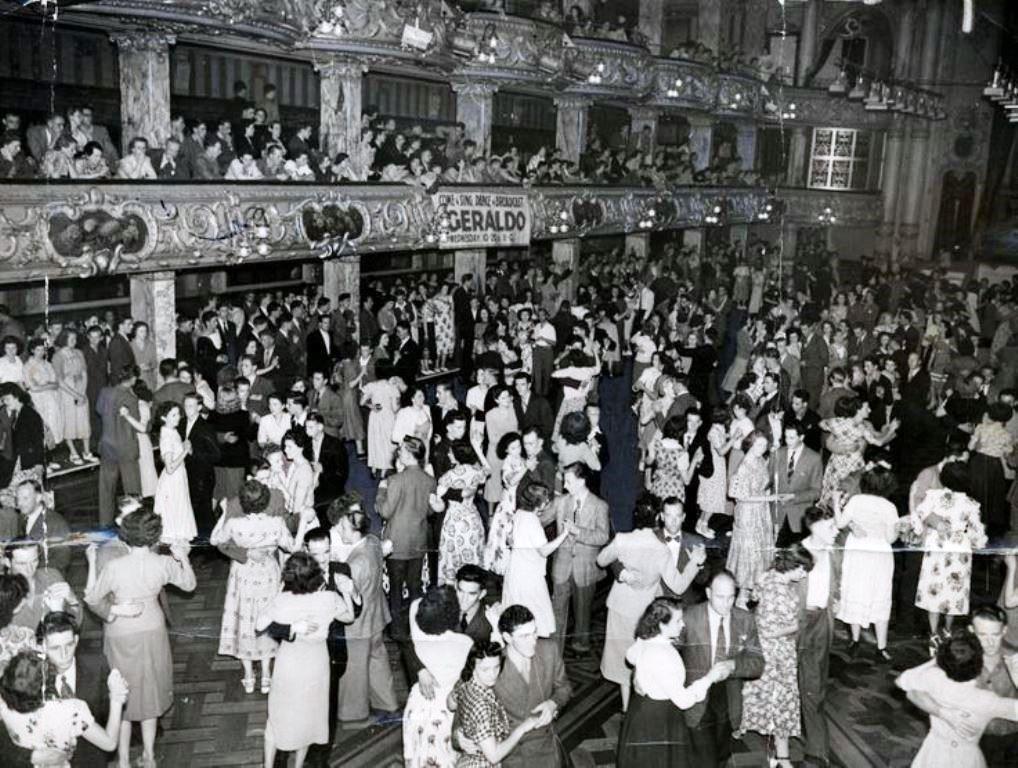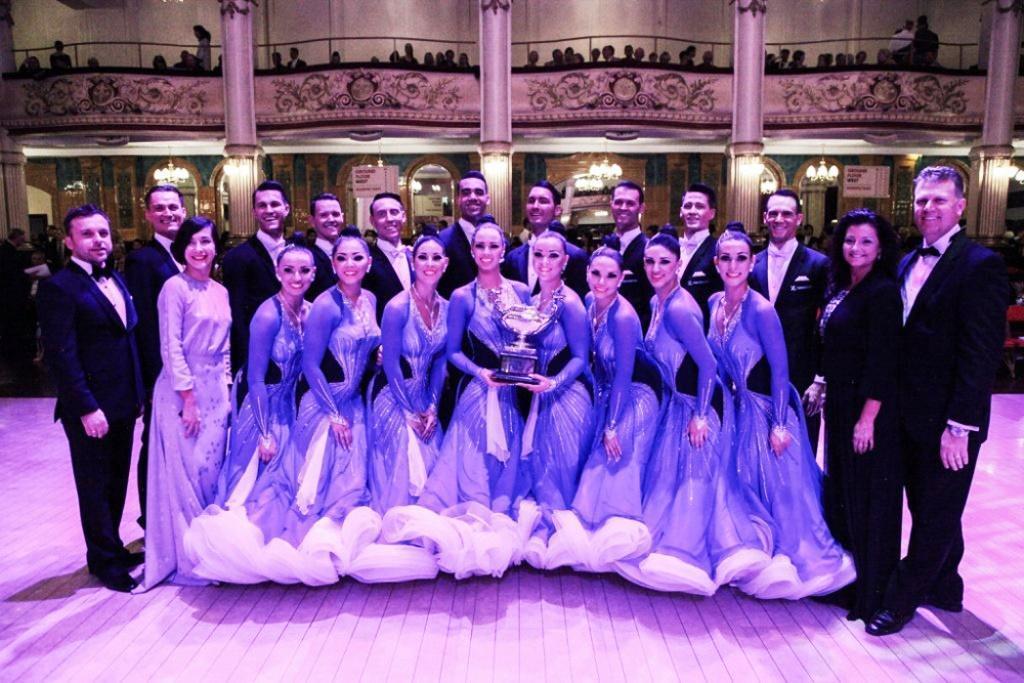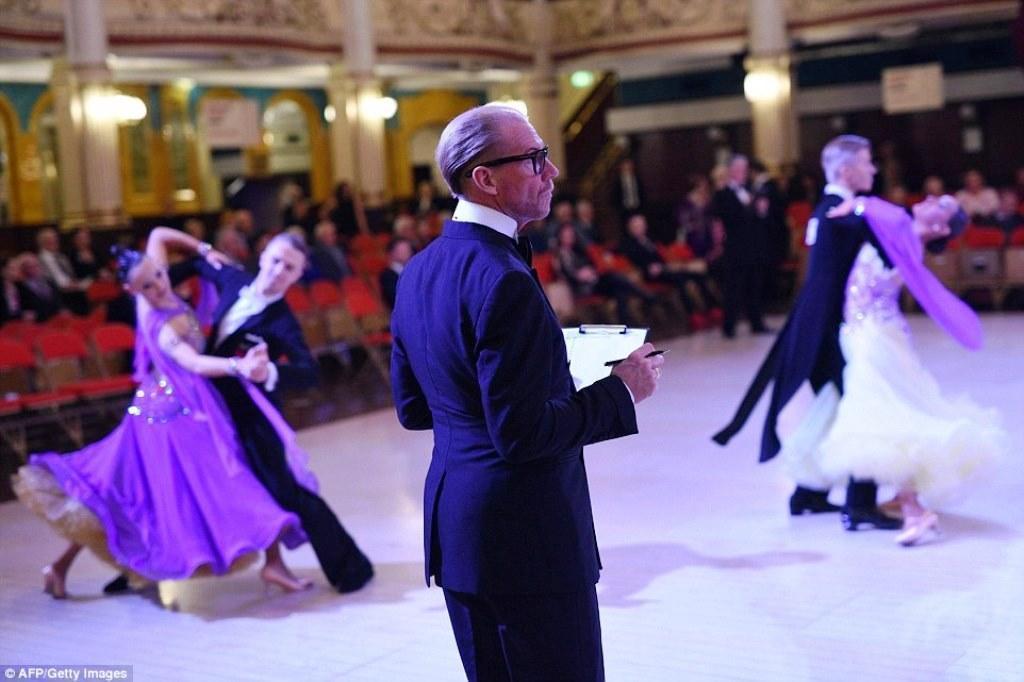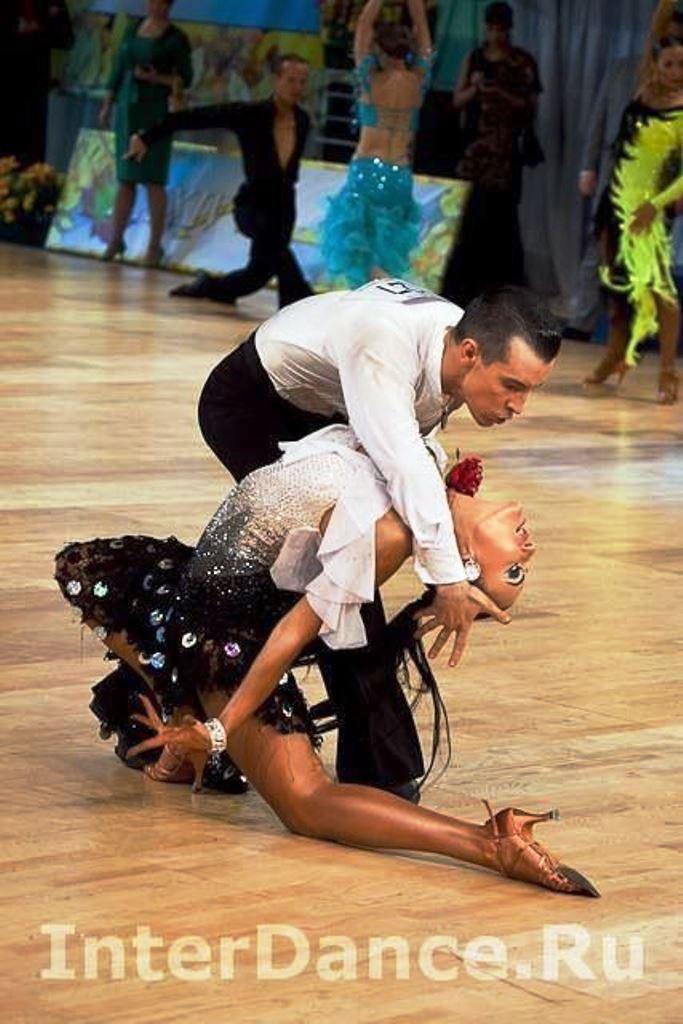
1. The Introduction of the Foxtrot in 1914
The Introduction of the Foxtrot in 1914
The Foxtrot is a popular ballroom dance that originated in the United States in 1914. It is believed to have been created by vaudeville actor Harry Fox and was first performed in the Ziegfeld Follies. The Foxtrot quickly spread to the United Kingdom, where it quickly became a popular dance in ballrooms around the country.
The Foxtrot was a smooth and elegant dance that was performed in 4/4 time. It was a combination of the two-step and the one-step, with the dancers taking long strides and gliding across the floor. The Foxtrot was the perfect dance for the more refined British ballroom scene, and it quickly became a staple of the ballroom repertoire.
The Impact of the Foxtrot on British Ballroom Dance
The Foxtrot had a huge impact on British ballroom dance. It revolutionised the way that people danced, and it gave rise to a whole new style of ballroom dancing. The Foxtrot was the perfect dance for the more refined British ballroom scene, and it quickly became a staple of the ballroom repertoire.
The Foxtrot also had a huge influence on the way that people dressed for the ballroom. The style of dress for the Foxtrot was much more formal than the styles for other dances, and it was the first time that men and women were expected to dress in evening wear. This set the standard for British ballroom dress for years to come.
The Foxtrot was a major milestone in British ballroom dance history, and it remains one of the most popular dances today.
2. The Formation of the British Ballroom Dance Council in 1927
The Formation of the British Ballroom Dance Council in 1927
The British Ballroom Dance Council (BBDC) was founded in 1927, and its formation was a landmark moment in the history of British ballroom dancing. It was the first organisation of its kind in the world, and it was set up to promote and regulate ballroom dancing in the UK.
The BBDC was established by a group of leading ballroom dance professionals, who wanted to ensure that ballroom dancing was performed to a high standard and was accessible to all. The Council set up a system of qualifications and exams, which were used to ensure that ballroom dancers were competent and capable of performing to a high standard. It also organised competitions and events, which helped to promote and popularise the art of ballroom dancing.
The BBDC was also responsible for the introduction of the first official set of ballroom dancing rules, which were adopted by competitions and events throughout the UK. This helped to ensure that ballroom dancing was performed in a consistent manner, and it also helped to ensure that the art of ballroom dancing was respected and enjoyed by all.
The Impact of the British Ballroom Dance Council
The formation of the BBDC had a huge impact on the development of ballroom dancing in the UK. It helped to ensure that ballroom dancing was performed to a high standard, and it also helped to promote the art of ballroom dancing to a wider audience.
The BBDC also had a significant impact on the development of ballroom dancing around the world. Many of the rules and regulations set out by the BBDC were adopted by other countries, and this helped to ensure that ballroom dancing was performed in a consistent manner across the globe.
The British Ballroom Dance Council still exists today, and it continues to promote and regulate ballroom dancing in the UK. It is a testament to the impact that the BBDC had on the development of ballroom dancing in the UK, and it is a reminder of the importance of the organisation in the history of British ballroom dancing.
3. The Formation of The Imperial Society of Teachers of Dancing in 1904
The Formation of The Imperial Society of Teachers of Dancing in 1904
The Imperial Society of Teachers of Dancing (ISTD) was established in 1904 by a group of leading dance figures of the time. The society was formed with the purpose of setting and maintaining standards for teaching and examinations in the art of ballroom dancing.
The founding members of the ISTD included the likes of Thomas Edmondson, who had been the first to teach the Viennese Waltz in England, and Cecil B. Sharp, who was a prominent figure in the English folk dance revival.
The ISTD’s Early Years
The ISTD’s first syllabus was published in 1906 and included dances such as the Waltz, the Polka, the Quadrille and the Galop. The syllabus was revised and expanded over the years to include the Foxtrot, the Tango, the Quickstep and the Jive.
The ISTD also established examinations and awards for teachers and students of the dance. In 1912, the ISTD introduced the first examinations for ballroom dancing, which were designed to test the knowledge and performance of students.
The ISTD Today
Today, the ISTD is an internationally recognised organisation with over 10,000 members in more than 50 countries. It continues to set and maintain standards for teaching and examinations in ballroom dancing, with syllabuses covering all the major ballroom dances.
The ISTD also continues to award examinations and awards for teachers and students of the dance. It is now the largest ballroom dance organisation in the world and is the only organisation recognised by the World Dance Council.
4. The First British Ballroom Dance Championships in 1934
The First British Ballroom Dance Championships in 1934
The first British Ballroom Dance Championships took place in 1934, and marked a significant milestone in the history of ballroom dancing in the UK. The event was organised by the British Ballroom Dance Council (BBDC), a governing body of dance professionals established in 1927.
The inaugural championships were held at the Albert Hall in London, and featured a range of competitions, including the Grand Ballroom Championship, Professional Championship, Amateur Championship, and Juvenile Championship. The event attracted a large crowd and was a great success, with competitors from all over Britain taking part.
The first British Ballroom Dance Championships was won by a professional couple, Mr and Mrs William T. Johnson. They were awarded the title of Grand Ballroom Champions, and their victory was hailed as a great moment in British ballroom history.
The success of the first British Ballroom Dance Championships sparked a surge in interest in ballroom dancing, and it quickly became a popular pastime across the country. The event has since gone on to become one of the most prestigious competitions in the UK.
Conclusion
The first British Ballroom Dance Championships in 1934 was an important moment in British ballroom history. It marked the beginning of the popularity of ballroom dancing in the UK, and has since grown to become one of the most prestigious competitions in the country.
5. The Formation of the British Dance Council in 1960
The Formation of the British Dance Council in 1960
The British Dance Council (BDC) was formed in 1960 and is the governing body for ballroom dancing in the UK. It is responsible for setting the rules and regulations that govern the sport, as well as organising and running events and competitions.
The BDC was founded by a group of ballroom dancing enthusiasts led by the late Sir Bruce Forsyth. The council was formed to ensure that the sport was regulated and that it would continue to grow and develop in the UK.
The BDC is made up of five regional bodies, each with their own governing body and representatives from the various dance schools and clubs across the country. These regional bodies are responsible for organising and running events and competitions in their own areas.
The BDC also works with a number of other organisations to promote ballroom dancing in the UK, such as the International DanceSport Federation (IDSF), the World DanceSport Federation (WDSF), and the British Amateur DanceSport Association (BADA).
Objectives of the British Dance Council
The main objectives of the BDC are to promote the sport of ballroom dancing in the UK, to ensure the highest standards of safety and fair play, and to foster good sportsmanship. The BDC also works to develop and improve the quality of ballroom dancing in the UK, and to ensure that all dancers are treated fairly and with respect.
The BDC also works to ensure that all dancers have access to the same opportunities, regardless of their age, gender, or ability. The BDC also works to ensure that all dancers are given the same opportunities to compete in competitions and events, and that all dancers are given the same respect and recognition for their achievements.
The BDC also works to ensure that all dancers are given the same opportunities to develop their skills and knowledge in the sport, and to ensure that they are given the same opportunities to compete in international competitions. The BDC also works to ensure that all dancers are given the same opportunities to become professional dancers, and to help them reach their full potential.
6. The First Same-Sex Ballroom Dance Competition in 1990
The First Same-Sex Ballroom Dance Competition in 1990
In 1990, the first ever same-sex ballroom dance competition was held in London. This event was a major milestone in the history of ballroom dancing in Britain, as it marked the first time that a same-sex couple could compete in a major ballroom dancing event.
The competition was organised by the British Ballroom Dance Council, and featured a wide range of couples from across the UK. The couples were judged on their technique, choreography, and musicality, and the judges were looking for couples that showed a strong sense of connection and partnership.
The competition was a success and was widely reported in the media, with many of the couples receiving praise for their performances. The event was a huge step forward for the ballroom dancing community in Britain, and it paved the way for more same-sex couples to compete in future events.
The Legacy of the Competition
The competition was a major breakthrough for same-sex couples in ballroom dancing, and it has had a lasting impact on the sport. Today, same-sex couples are welcome in many ballroom dancing competitions, and they have become an integral part of the sport.
The competition also helped to raise awareness of the issue of same-sex couples in ballroom dancing and encouraged more people to take up the sport. It showed the world that same-sex couples can be just as successful and talented as any other couple, and this has had a positive effect on the sport.
The first same-sex ballroom dance competition in 1990 was a major milestone in the history of British ballroom dancing, and its legacy continues to this day.
7. The Introduction of Latin American Dancing in the 1950s
7. The Introduction of Latin American Dancing in the 1950s
In the 1950s, Britain saw the introduction of Latin American dances such as the cha-cha, samba, and rumba. These dances were met with enthusiasm by the British public, and they quickly became popular in ballrooms across the country.
The Latin American dances were seen as exotic and exciting, and they provided a unique challenge to ballroom dancers. The cha-cha, samba, and rumba all had their own unique steps and rhythms, and it took a lot of practice to be able to dance them well.
The introduction of these dances to Britain also had a huge impact on the way ballroom dancing was taught. Teachers began to focus more on teaching the Latin American dances, and the traditional English dances such as the waltz and foxtrot began to take a back seat.
The Impact of Latin American Dances
The introduction of Latin American dances to Britain had a huge impact on the way ballroom dancing was viewed. It was no longer seen as a stuffy, old-fashioned activity, but rather as something that was fun and modern.
The popularity of Latin American dances also led to the rise of competitive ballroom dancing. Competitions such as the British Open and the World Championships began to feature the cha-cha, samba, and rumba, and this increased the popularity of ballroom dancing even further.
The introduction of Latin American dances to Britain was a major milestone in the history of British ballroom dancing, and it helped to shape the way the dance is practised today.
8. The Formation of the British Dance Alliance in 2000
8. The Formation of the British Dance Alliance in 2000
The formation of the British Dance Alliance (BDA) in 2000 marked a significant moment in British ballroom dance history. The BDA was formed to represent all aspects of ballroom dance in the United Kingdom, from competitive to social dancing.
The BDA was established to bring together the various governing bodies of different ballroom dance styles, such as the British Ballroom Dance Council (BBDC) and the British Association of Latin American Dance (BALAD). The BDA was also responsible for promoting and developing the sport of ballroom dance in the UK.
The BDA’s mission was to promote the growth and development of ballroom dance in the UK, provide a platform for the exchange of ideas, and to create a unified voice for ballroom dance in the UK. The BDA also aimed to create a safe and fair environment for all dancers, regardless of style, age, or ability.
Goals of the BDA
The BDA’s main goals are to promote the growth and development of ballroom dance in the UK, provide a platform for the exchange of ideas, and to create a unified voice for ballroom dance in the UK. The BDA also works to create a safe and fair environment for all dancers, regardless of style, age, or ability.
The BDA also works to promote the sport of ballroom dance through competitions, educational programs, and other activities. The BDA is also responsible for setting and maintaining standards of dance instruction, as well as providing resources and support to dance teachers and students.
The BDA is also committed to providing a platform for the exchange of ideas and creating a unified voice for ballroom dance in the UK. The BDA is also responsible for promoting the sport of ballroom dance in the UK and abroad.
9. The First Professional Ballroom Dance Championships in 2009
The First Professional Ballroom Dance Championships in 2009
In 2009, the first ever Professional Ballroom Dance Championships were held in London, England. This event marked a major milestone in British ballroom dance history, as it was the first time that professional dancers had an opportunity to compete for a prize.
The competition was a huge success, with over 200 professional dancers from all over the UK taking part. The competition featured several categories, including Latin, Standard, and Freestyle. In the end, the winners were crowned from each category, and the overall winner was the professional couple, Mark and Sarah.
The event was a huge success and was the beginning of a new era for British ballroom dancing. It opened up the possibility of professional competitions and opportunities for dancers to make a living from their art.
Legacy of the First Professional Ballroom Dance Championships
The first Professional Ballroom Dance Championships in 2009 set a precedent for future competitions. Since then, the event has grown in popularity, with more and more professional dancers taking part every year.
The event has also had a lasting impact on the British ballroom dance scene. It has encouraged more people to take up ballroom dancing as a profession and has led to an increase in the number of professional competitions and events.
The event has also had a positive impact on the public’s perception of ballroom dancing. It has helped to raise the profile of the art form and has encouraged more people to take part in ballroom dancing, both professionally and recreationally.
10. The Launch of the UK Ballroom Dance Championships in 2018
10. The Launch of the UK Ballroom Dance Championships in 2018
The UK Ballroom Dance Championships are a major event in the British ballroom dancing calendar. Launched in 2018, the Championships are a celebration of the best in British ballroom dancing, with competitors from across the country competing for the coveted title of UK Ballroom Dance Champion.
The Championships are open to all levels of dancer, from beginners to professionals, and feature a range of styles from Latin to Standard. The event is held over a weekend and includes a range of competitions, from the Grand Prix to the Rising Star.
The 2018 Championships saw a record number of competitors, with over 500 dancers taking part. The event was broadcast on Sky Sports and was a huge success, with the finalists being crowned the UK Ballroom Dance Champions.
The Championships have continued to grow in popularity, with the 2019 event seeing more than 1,000 competitors. The event has become a great showcase for the best of British ballroom dancing, and is a great way to celebrate the history of the sport.
Conclusion
The launch of the UK Ballroom Dance Championships in 2018 has been a great success, and has helped to bring ballroom dancing back into the spotlight in Britain. The Championships are a great way for dancers of all levels to show off their skills, and for the public to appreciate the beauty and skill of the sport. The event is a great way to celebrate the history of ballroom dancing in Britain, and to help ensure its future.




